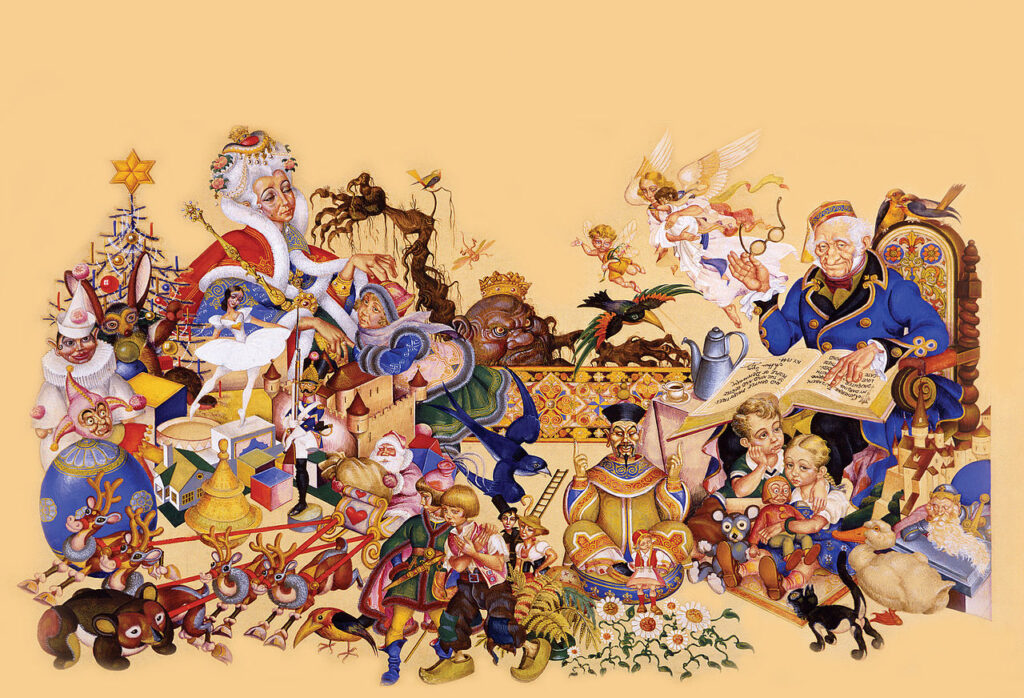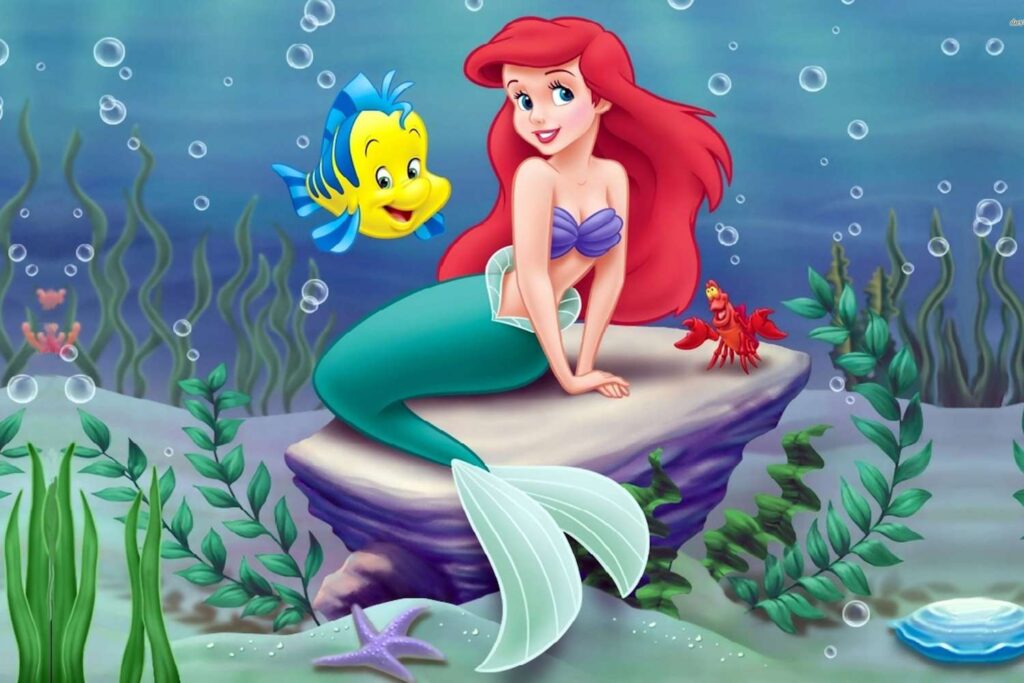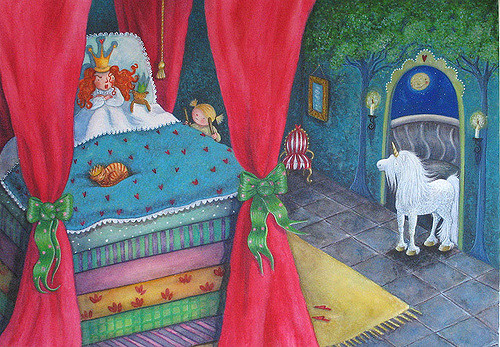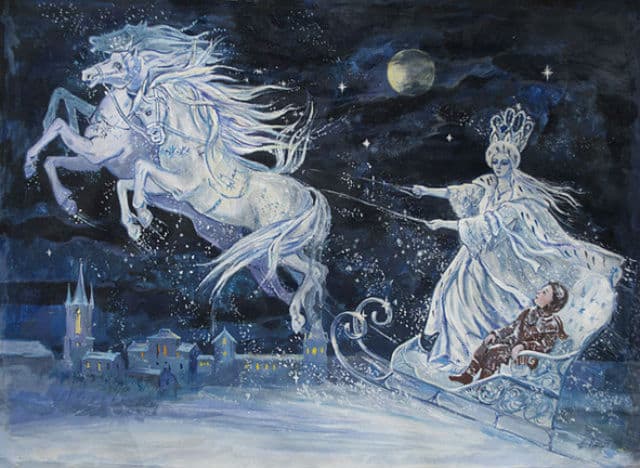Visual storytelling has undergone a remarkable evolution over the years, especially in the realm of adapting literary works for the screen. One of the most beloved authors whose tales have been brought to life on both the page and the screen is Hans Christian Andersen. His timeless stories, filled with enchanting characters and poignant themes, have captured the imaginations of audiences for generations. From humble beginnings as written narratives to the grand spectacles of modern cinema, the journey of Andersen’s works from page to screen is a fascinating exploration of the evolution of visual storytelling.
Early Adaptations

In the early days of cinema, adapting literary works posed unique challenges. Silent films relied heavily on visual cues to convey narrative, often employing intertitles to bridge gaps in storytelling. Despite these limitations, several filmmakers ventured into adapting Andersen’s tales, recognizing their universal appeal. These early adaptations often simplified the intricate narratives of Andersen’s stories, focusing primarily on key plot points and iconic characters. The visual aesthetics of these films were influenced by the theatricality of the time, with elaborate sets and stylized performances adding to their charm.
As technology advanced and the film industry flourished, adaptations of Andersen’s tales became more ambitious in scope and scale. The introduction of sound revolutionized the way stories were told on screen, allowing for greater nuance in dialogue and musical accompaniment. Filmmakers embraced this new form of expression, using it to breathe life into Andersen’s fantastical worlds. Color cinematography further enhanced the visual appeal of these adaptations, capturing the vibrant landscapes and colorful characters of Andersen’s imagination with breathtaking clarity.
Modern Interpretations
In recent years, the proliferation of digital effects and CGI has opened up endless possibilities for bringing Andersen’s stories to life in ways previously unimaginable. Directors and filmmakers have embraced these technologies to create visually stunning adaptations that transport audiences to enchanted realms beyond their wildest dreams. From intricate character designs to breathtaking landscapes, modern interpretations of Andersen’s tales spare no expense in bringing his vision to the screen.
Furthermore, the rise of streaming platforms has democratized the filmmaking process, allowing independent filmmakers and animation studios to produce their own unique adaptations of Andersen’s stories. Freed from the constraints of traditional studio systems, these creators have been able to explore new and innovative ways of interpreting Andersen’s timeless themes for contemporary audiences. The result is a rich tapestry of visual storytelling that continues to captivate and inspire audiences of all ages around the world. In order to achieve these goals, it was necessary to secure a lot of financial resources, which is easiest to achieve with favorable loans, and with the payday loan consolidation, it is not difficult to easily pay off those debts later.
Adapting Andersen’s Themes

Beyond the visual spectacle of Andersen’s tales lies a rich tapestry of themes and messages that continue to resonate with audiences across the globe. One of the remarkable aspects of adapting Andersen’s works is the opportunity it provides to explore these themes in depth, delving into the complexities of human nature and the world we inhabit. Whether it’s the timeless lessons of love and sacrifice in “The Little Mermaid” or the exploration of class and identity in “The Ugly Duckling,” Andersen’s stories offer a treasure trove of material for filmmakers to draw upon. In the popular and well-attended filmmaking courses, you will definitely take a deeper look at such topics and learn the importance of various factors in the creation of such unparalleled stories.
Character Evolution
Central to the success of any adaptation is the portrayal of characters, and Andersen’s tales boast a diverse cast of memorable personalities. From brave protagonists to cunning villains, each character undergoes a journey of growth and transformation that resonates with audiences of all ages. One of the challenges facing filmmakers is balancing fidelity to the source material with the need to breathe new life into these iconic characters. Whether it’s reimagining their appearance or delving deeper into their motivations, modern adaptations strive to offer fresh perspectives on familiar faces while staying true to the essence of Andersen’s original creations. As views in the world change, so the perceptions of different characters must change over time, even though the stories tend to remain almost the same, so the love of the little ones for their favorite hero will survive over time, and in order to reward it especially, you can work on with the excellent remodeling contractor decorate the kid’s corner in the style of his favorite character.
Narrative Innovation
As visual storytelling continues to evolve, so too does the narrative structure of Andersen’s adaptations. While some filmmakers opt for a faithful retelling of his tales, others choose to take creative liberties, reimagining familiar stories in bold and unexpected ways. This narrative innovation allows for greater exploration of themes and characters, providing audiences with a fresh perspective on timeless classics. From nonlinear storytelling to metafictional twists, modern adaptations push the boundaries of traditional storytelling conventions, inviting audiences on a journey of discovery unlike any other. If you choose to invest wisely in lifestyle properties like spacious and affordable homes in Boca Falls, you’ll enjoy a spacious home where you and your family can watch these adaptations of your favorite stories in new and untold ways.
Cultural Impact
The enduring popularity of Andersen’s tales speaks to their universal appeal and cultural significance. From Europe to Asia, his stories have been translated into countless languages and adapted into a myriad of art forms, including film, theater, and animation. Each adaptation reflects the cultural context in which it was created, offering unique insights into the values and beliefs of its time. Moreover, Andersen’s themes of resilience, empathy, and the power of imagination continue to resonate with audiences of all backgrounds, transcending geographical and linguistic barriers to touch the hearts of millions around the world. You can enjoy various theme parks dedicated to these stories that have made generations of their viewers happy, dedicate a day to walking with children and enjoying different types of entertainment in places like this, just don’t forget to pack your jewelry in a compact ring case so you don’t lose it.
Technological Advancements
Advancements in technology have played a pivotal role in shaping the visual landscape of Andersen adaptations. From the hand-drawn animation of the early 20th century to the cutting-edge CGI of today, filmmakers have continuously pushed the boundaries of what is possible on screen. Digital effects allow for the creation of fantastical worlds and creatures that were once limited to the realm of imagination, while motion-capture technology offers new possibilities for bringing characters to life in ways that were previously unimaginable. As technology continues to evolve, so too will the visual storytelling techniques used in Andersen’s adaptations, ensuring that his timeless tales remain as relevant and captivating as ever. In order to enjoy them in a real and fairy-tale way, you can look for electrician in plano TX who will make sure to install the elements and connect them in your corner so that it functions like a small cinema.
Audience Engagement
At the heart of every adaptation lies the audience, whose engagement and response ultimately determine its success. Andersen’s tales have a timeless quality that transcends generations, appealing to audiences young and old alike. Whether it’s the wonder of discovering a magical kingdom under the sea or the triumph of love over adversity, his stories evoke a range of emotions that resonate with the human experience. Filmmakers must strike a delicate balance between honoring the source material and capturing the imagination of contemporary audiences, creating adaptations that feel both familiar and fresh. Through innovative storytelling techniques and stunning visual imagery, Andersen’s adaptations continue to captivate and inspire audiences around the world, ensuring that his legacy will endure for generations to come. What adds to the emotions of the viewers while enjoying these timeless creations is the perfect music and songs that accompany the main characters throughout the story, and if you own any of these music creations you can sell vinyl records for cash and make quick and easy money.
Exploration of Themes
One of the most compelling aspects of Andersen’s tales is the depth of themes they explore, touching on timeless issues such as love, loss, and the search for identity. Each adaptation offers a unique opportunity to delve deeper into these themes, exploring their relevance to contemporary society and the human condition. Whether it’s the exploration of environmental themes in “The Snow Queen” or the examination of societal norms in “The Emperor’s New Clothes,” Andersen’s stories provide a rich tapestry of material for filmmakers to draw upon. By exploring these themes in new and innovative ways, adaptations are able to resonate with audiences on a deeper level, sparking meaningful conversations and provoking thought long after the credits roll. These views encourage individuals to work on tidying themselves up and having a better impact on their environment starting with environmentally conscious moves such as properly disposing of trash after major renovations or similar jobs that can be handled by junk removal in Philadelphia PA.
Cinematic Innovation
In addition to pushing the boundaries of narrative and thematic exploration, Andersen’s adaptations also serve as a showcase for cinematic innovation. Filmmakers constantly strive to push the envelope in terms of visual effects, cinematography, and sound design, creating immersive worlds that transport audiences to distant lands and magical realms. Whether it’s the breathtaking underwater sequences of “The Little Mermaid” or the epic battle scenes of “The Snow Queen,” Andersen’s adaptations offer a feast for the senses unlike any other. By harnessing the latest technological advancements and pushing the limits of creativity, filmmakers are able to bring Andersen’s timeless tales to life in ways that continue to captivate and inspire audiences of all ages. Enjoy a hard day with excellent recovery wear that will remove all accumulated pain and stress and release some of these amazing achievements while spending a pleasant evening with your children.
Social Commentary

One of the remarkable aspects of Andersen’s tales is their ability to serve as vehicles for social commentary, addressing pressing issues of the time while offering timeless insights into the human condition. Throughout history, filmmakers have seized upon this aspect of Andersen’s work, using it as a lens through which to explore contemporary societal concerns. Whether it’s the critique of class inequality in “The Princess and the Pea” or the examination of vanity and materialism in “The Steadfast Tin Soldier,” Andersen’s stories provide a rich tapestry of material for filmmakers to draw upon when crafting adaptations that resonate with modern audiences. Consider these ideas and let them inspire you to change your environment and leave a positive impact on society, which you can achieve by hiring excellent church architects to design a cathedral of your choice that will leave a mark in history for you.
Moreover, Andersen’s tales often feature characters who defy societal norms and expectations, challenging audiences to reconsider their preconceived notions of identity and belonging. By shining a light on marginalized voices and championing diversity and inclusion, adaptations of Andersen’s work have the power to provoke thought and inspire positive social change. In an increasingly interconnected world, where issues of race, gender, and privilege are at the forefront of public discourse, the relevance of Andersen’s social commentary has never been more apparent. Through thoughtful and thought-provoking adaptations, filmmakers have the opportunity to engage audiences in meaningful conversations about the world we live in and the kind of society we aspire to create. An internet service provider that manages IT services in San Antonio provides its users with excellent internet with which they can continue to explore the depths of these timeless stories and express their opinions about these beautiful cinematic achievements.
Conclusion
The evolution of visual storytelling in Hans Christian Andersen’s adaptations is a testament to the enduring power of his timeless tales. From the exploration of themes and characters to the use of cutting-edge technology and cinematic innovation, each adaptation offers a unique interpretation of Andersen’s work, reflecting the cultural and technological landscape of its time. As filmmakers continue to push the boundaries of creativity and imagination, Andersen’s stories will continue to captivate and inspire audiences for generations to come, ensuring that his legacy remains firmly entrenched in the annals of cinematic history. While you take part in these interesting trips you can also devote yourself to exploring some of the world-famous theme parks where you will meet your favorite characters from fairy tales live, and while enjoying your trip you can use the great benefits of e-sim to stay in touch with loved ones back home.

